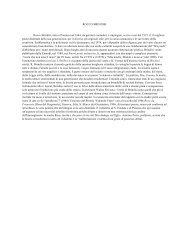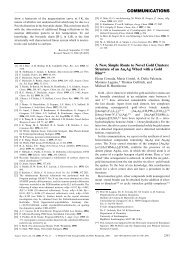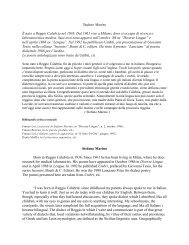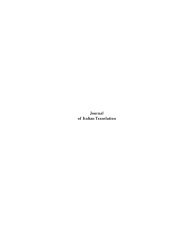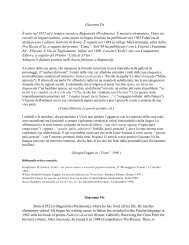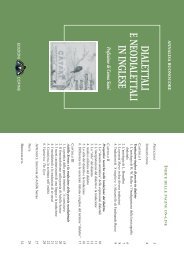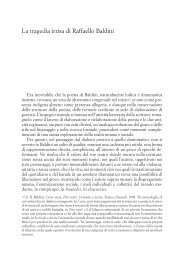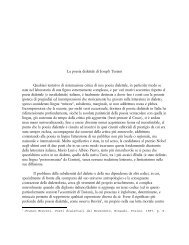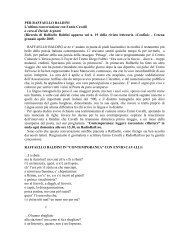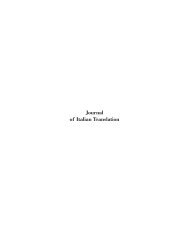Journal of Italian Translation
Journal of Italian Translation
Journal of Italian Translation
Create successful ePaper yourself
Turn your PDF publications into a flip-book with our unique Google optimized e-Paper software.
LE ARANCE D’ORO<br />
by Luigi Capuana<br />
Translated by Santi Buscemi<br />
Santi Buscemi is a pr<strong>of</strong>essor <strong>of</strong> English at Middlesex County<br />
College in Edison, NJ, where he chaired the English Department<br />
(1974-2003). He has also taught at Rutgers University. The former<br />
president <strong>of</strong> the New Jersey College English Association and the<br />
New Jersey Association for Developmental Education, he has presented<br />
at several pr<strong>of</strong>essional conferences in the US and was a keynote<br />
speaker at the University <strong>of</strong> Natal (South Africa) conference<br />
on language instruction in 2000. He is the author and co-author <strong>of</strong><br />
six college texts on writing published by McGraw-Hill.<br />
The following selection is from Luigi Capuana’s C’era Una<br />
Volta. Buscemi’s translation <strong>of</strong> Capuana’s “I tre anelli” appeared<br />
in the summer 2004 issue <strong>of</strong> Forum Italicum. Pr<strong>of</strong>. Buscemi is the<br />
son <strong>of</strong> Sicilian immigrants from the province <strong>of</strong> Agrigento.<br />
Luigi Capuana (1839-1915) was born in Mineo, Sicily. After<br />
studying law at the University <strong>of</strong> Catania, he began to write plays<br />
for a company <strong>of</strong> amateur actors and showed an intense interest in<br />
popular poetry. In 1864, he moved to Florence, then capital <strong>of</strong> Italy,<br />
and began his career as a literary critic by writing for La Nazione.<br />
Florence also introduced him to the work <strong>of</strong> Balzac and <strong>of</strong> other<br />
French novelists. By 1877, Capuana was in Milan writing for<br />
Corriere della Sera. In 1902, he was appointed to the chair <strong>of</strong> aesthetics<br />
and stylistics at the University <strong>of</strong> Catania.<br />
As a literary critic, Capuana established a reputation for objectivity<br />
and analytical acumen. He is also remembered for having<br />
championed theories <strong>of</strong> romantic naturalism in works such as Studi<br />
sulla letteratura contemporanea (1880-82). In addition, his ability to<br />
expose the psychology <strong>of</strong> his characters won him lasting fame as a<br />
novelist. Among his best works in this genre are Giacinta (1879),<br />
Pr<strong>of</strong>umo (1891), Le Paesane (1894), and his masterpiece, Il Marchese<br />
di Roccaverdina (1901). He also wrote several children’s books, including<br />
a collection <strong>of</strong> fairy tales, C’era Una Volta… (1862)



